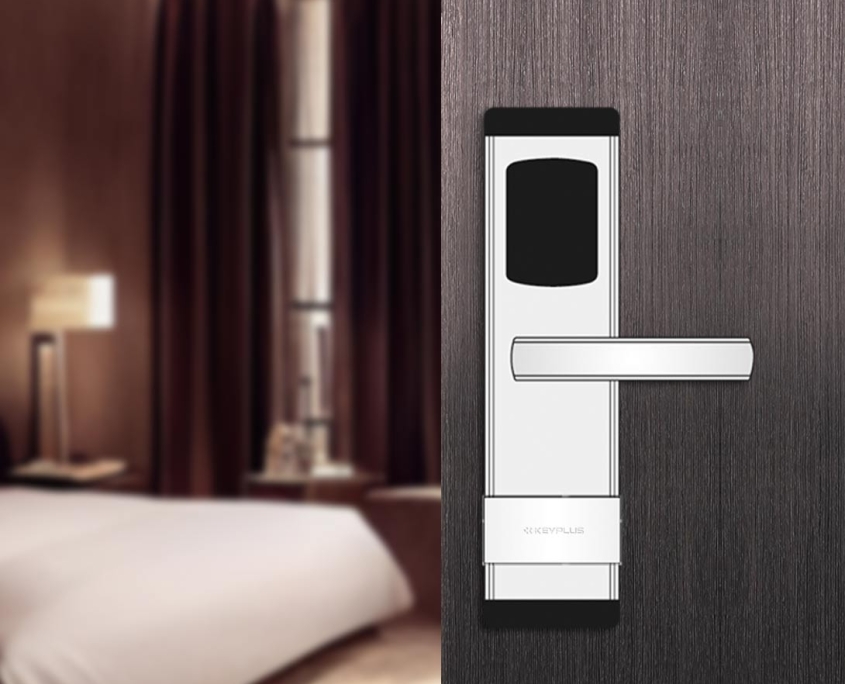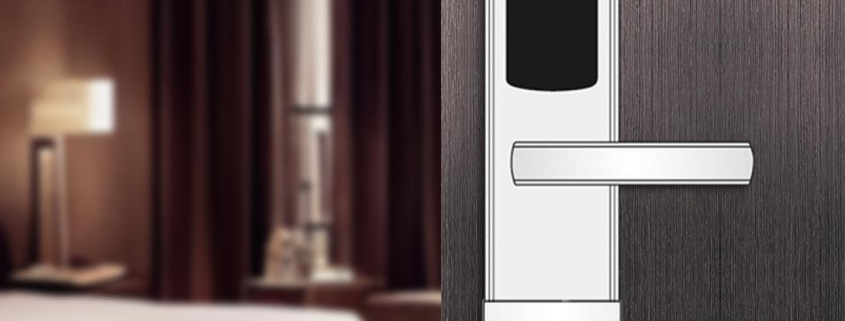How to Change a Battery on a Hotel Door Lock?
Have you ever been locked out of your hotel room because the electronic door lock died? Or maybe you work in hospitality and need to maintain keycard locks? Either way, knowing how to change a hotel door lock battery is a useful skill.
Most modern hotel locks run on batteries (usually AA or lithium), and while they’re designed to last 1-2 years, they will eventually need replacement. In this guide, we’ll cover:
How to tell when a hotel lock battery is dying
Step-by-step battery replacement instructions
Types of batteries used in hotel locks
Pro tips to avoid lockouts
When to call maintenance instead of DIY
Let’s get started!
1. Signs Your Hotel Door Lock Battery Is Dying
Before you take out the screwdriver, check for these warning signs:
The keycard reader light is dim or blinking (many locks have a low-battery indicator).
The lock is slow to respond when you swipe/tap your key.
The lock makes a weak “click” but doesn’t fully disengage.
Housekeeping or front desk mentions “battery alerts” on their system.
If you notice these issues, it’s time for a battery swap.
2. What You’ll Need
Tools Required:
Fresh batteries (usually AA, AAA, or CR123 lithium—check the lock manual).
Small screwdriver (Phillips or flathead, depending on the lock).
A backup key (in case the lock resets during the change).
Safety Note:
-
If you’re a guest, notify the front desk first—many hotels prefer staff to handle battery changes.
-
If you’re hotel staff, ensure you have master key access in case of issues.
3. Step-by-Step Guide to Changing the Battery
Step 1: Locate the Battery Compartment
Most hotel locks have a hidden battery panel on the interior side of the door. Look for:
-
A small sliding cover (common in Onity and Saflok locks).
-
A screw-secured panel (common in VingCard and Assa Abloy locks).
Step 2: Open the Battery Panel
-
If it’s a sliding cover, use a flathead screwdriver to gently pry it open.
-
If it’s screwed in, remove the screws and set them aside safely.
Step 3: Remove the Old Batteries
-
Most locks use 2-4 AA batteries in a stacked or side-by-side setup.
-
Note the orientation (+/-) before removing them (take a photo if needed).
Step 4: Insert the New Batteries
-
Match the polarity (+/-) exactly as the old batteries were placed.
-
Use high-quality alkaline or lithium batteries (cheap ones die faster).
Step 5: Test the Lock
-
Close the battery panel.
-
Try unlocking the door with a keycard or mobile key to confirm it works.
Step 6: Reset the Lock (If Needed)
-
Some locks may beep or flash after a battery change.
-
If the lock doesn’t respond, try removing and reinserting the batteries.
4. Types of Batteries Used in Hotel Locks
| Common Battery Type | Average Lifespan |
|---|---|
| 4x AA Alkaline | 1–2 years |
| 2x CR123 Lithium | 2+ years |
| 4x AA Lithium | 1.5–3 years |
| 2x AA Alkaline | 1–1.5 years |
Pro Tip: Lithium batteries last longer in extreme temperatures (great for outdoor/resort locks).

5. What to Do If the Lock Still Doesn’t Work
If the lock won’t power on after a battery change:
-
Double-check the battery orientation (+/- must match).
-
Clean the battery contacts (corrosion can block power).
-
Try a different set of batteries (sometimes new batteries are duds).
-
Call hotel maintenance—the lock may need a hard reset or professional repair.
6. How Hotels Prevent Battery Failures
Smart hotels use these best practices to avoid lockouts:
-
Routine battery checks (replaced every 12–18 months).
-
Low-battery alerts (some locks notify the front desk automatically).
-
Emergency key override (all electronic locks have a physical backup).
7. Can Guests Change the Battery Themselves?
Technically, yes—but most hotels prefer you don’t. Here’s why:
-
Voiding warranties (tampering may invalidate the lock’s service agreement).
-
Security risks (improper installation could leave the door unlocked).
-
Hotel liability (if something breaks, they’d rather handle it).
If you’re a guest, report the issue to the front desk—they’ll send maintenance.
8. Pro Tips for Hotel Staff
Keep spare batteries stocked (avoid last-minute emergencies).
Use a battery tester to check voltage before installing.
Log battery changes to track lifespan and predict replacements.
Final Thoughts
Changing a hotel door lock battery is simple if you know the steps, but it’s usually best left to trained staff. Whether you’re a traveler dealing with a dead lock or a hotel employee maintaining keycard systems, this guide ensures you’re prepared.
Have you ever had a hotel lock battery die on you?



